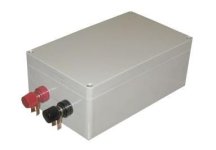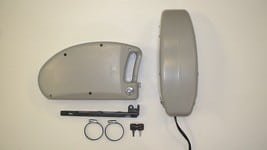recumpence
1 GW
Hey Guys,
I have a number of customers who are interested in Lipo packs. While I screen my clients to make sure they are familiar with them, I still have concerns about people using large Lipo packs in bikes. So, to that end I had an idea. What do you guys think about a billet aluminum Lipo case for safety? Now, I know the first question will be "For how much?" That I do not know yet. I have to calculate the material cost and machining time. However, especially for the high-end customer (I have quite a few), adding a case to a $600 to $1000 pack is not out of the question. Also, remember, Lipo packs are very small. A 48 volt 5AH pack is roughly 7 inches long by 3.5 inches wide by 2.25 inches thick. They can be machined from a solid block, or be made in pieces and bolted together.
Anyway, again, I do not know the cost as of yet. But, assuming it is not out of reach, what do you guys think about this? I know the cost is always a factor. But, if that is the case for a particular customer, Lipo would not be considered anyway.
So, does this sound like a waste of time?
(oh as a side note, these cases will not stop the development of my drive unit clamps. Those are already scheduled to be machined mid July). :wink:
Matt
I have a number of customers who are interested in Lipo packs. While I screen my clients to make sure they are familiar with them, I still have concerns about people using large Lipo packs in bikes. So, to that end I had an idea. What do you guys think about a billet aluminum Lipo case for safety? Now, I know the first question will be "For how much?" That I do not know yet. I have to calculate the material cost and machining time. However, especially for the high-end customer (I have quite a few), adding a case to a $600 to $1000 pack is not out of the question. Also, remember, Lipo packs are very small. A 48 volt 5AH pack is roughly 7 inches long by 3.5 inches wide by 2.25 inches thick. They can be machined from a solid block, or be made in pieces and bolted together.
Anyway, again, I do not know the cost as of yet. But, assuming it is not out of reach, what do you guys think about this? I know the cost is always a factor. But, if that is the case for a particular customer, Lipo would not be considered anyway.
So, does this sound like a waste of time?
(oh as a side note, these cases will not stop the development of my drive unit clamps. Those are already scheduled to be machined mid July). :wink:
Matt




